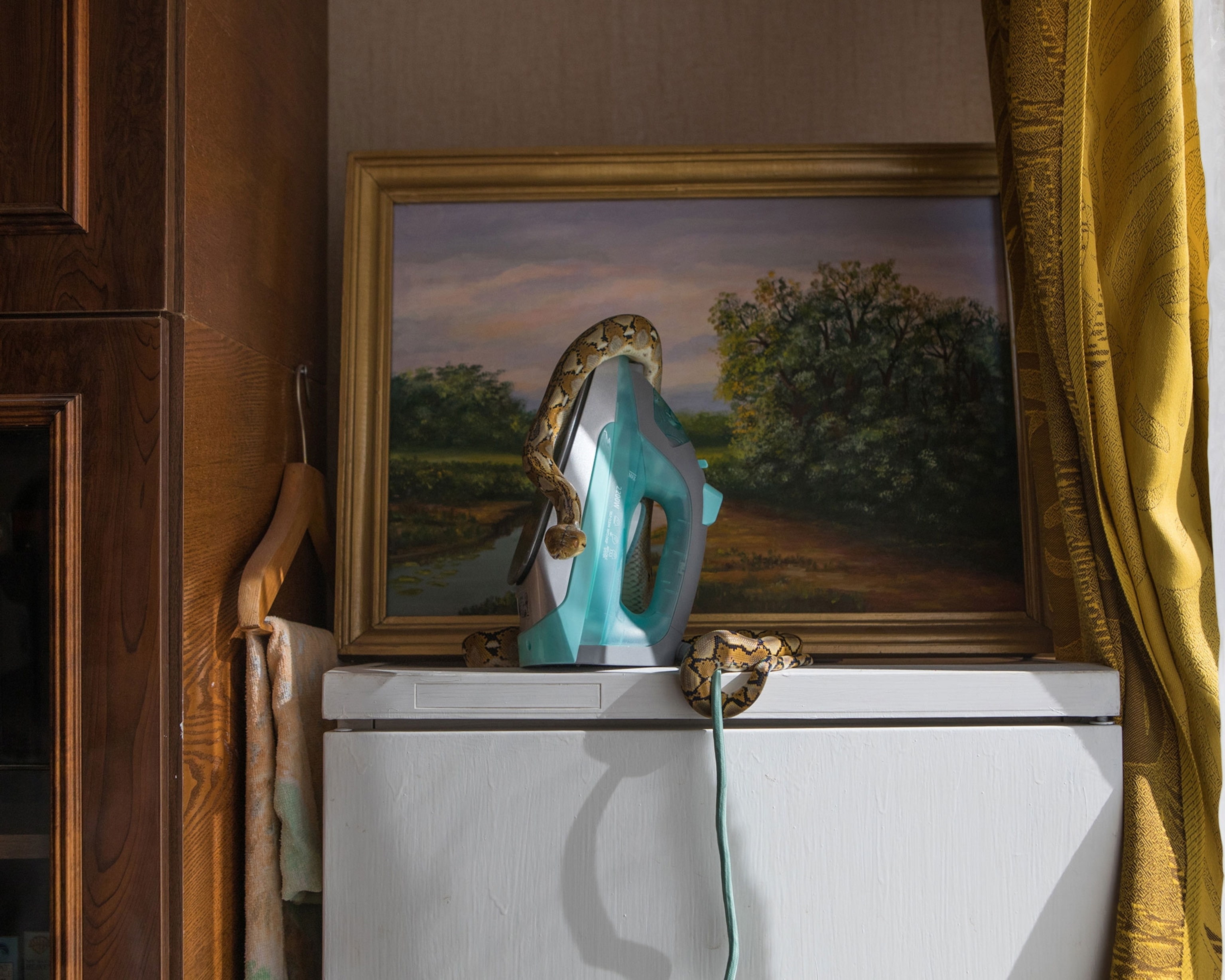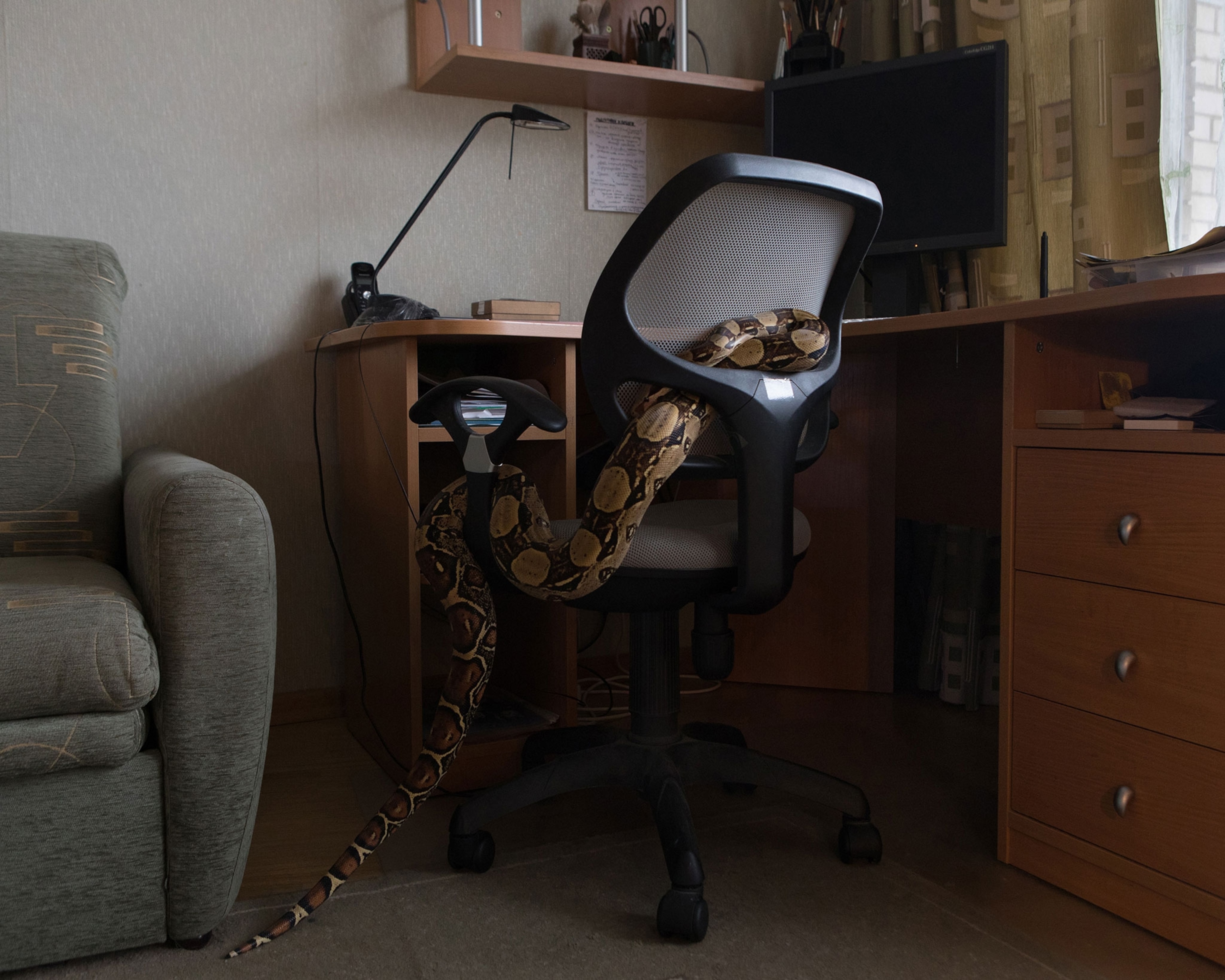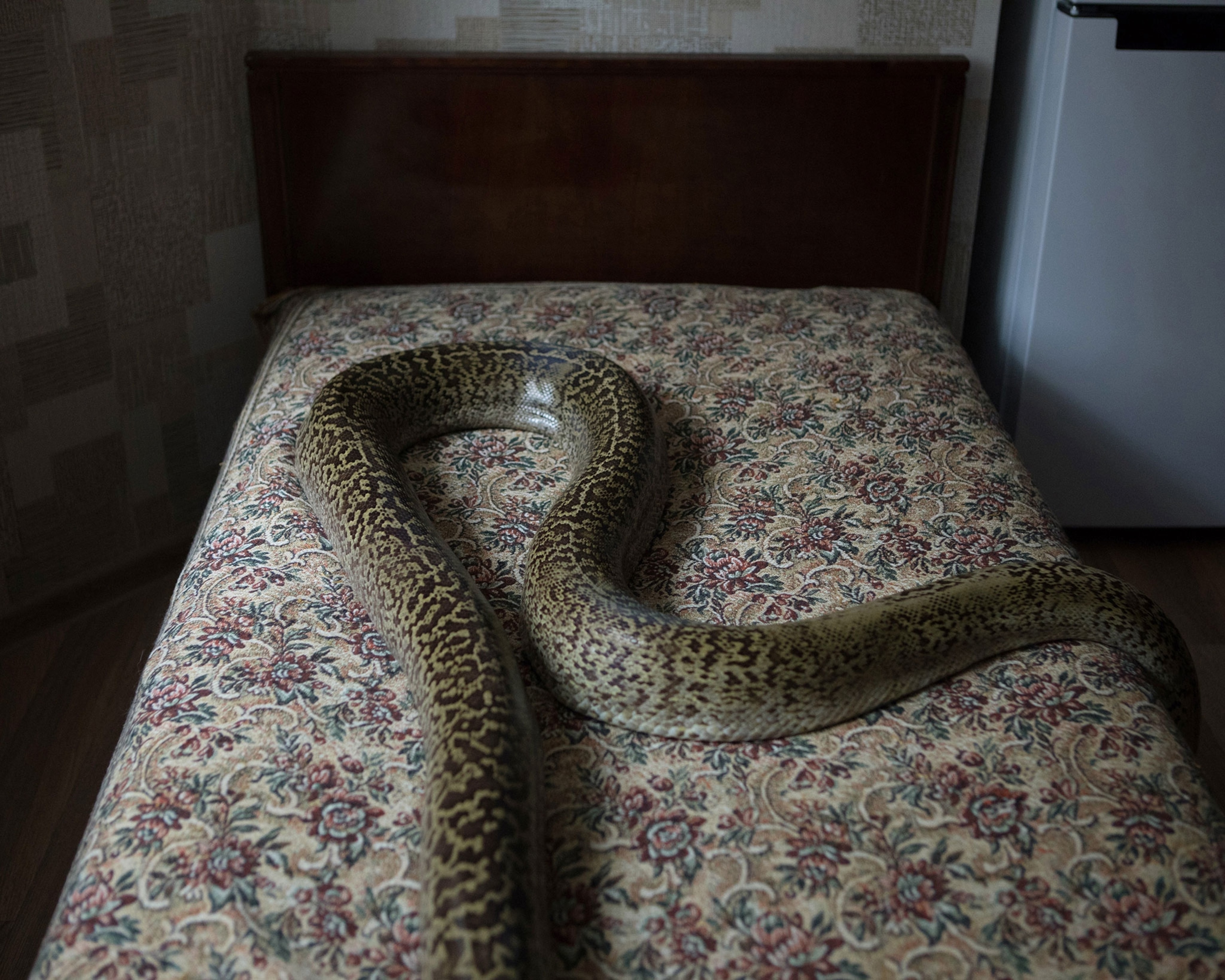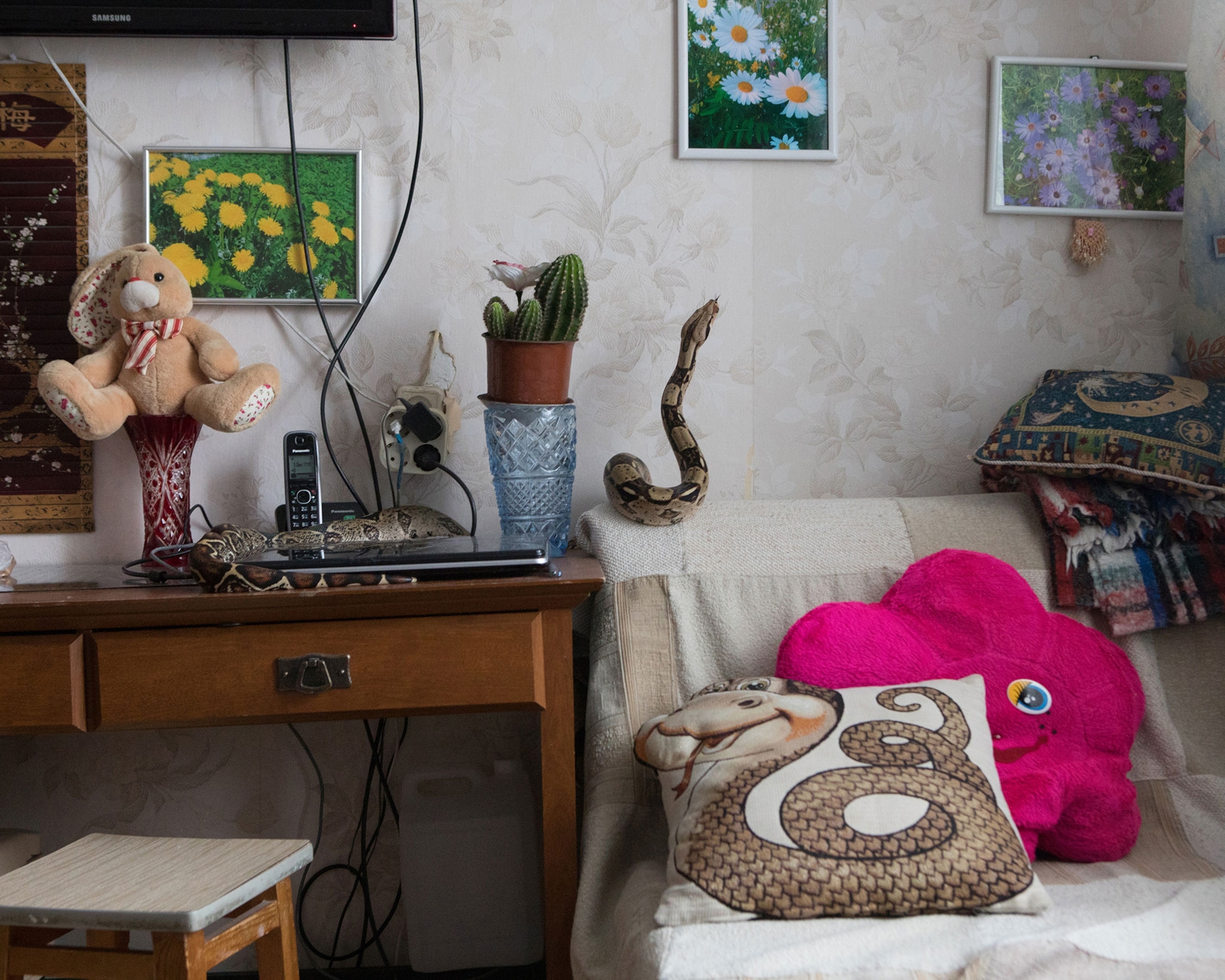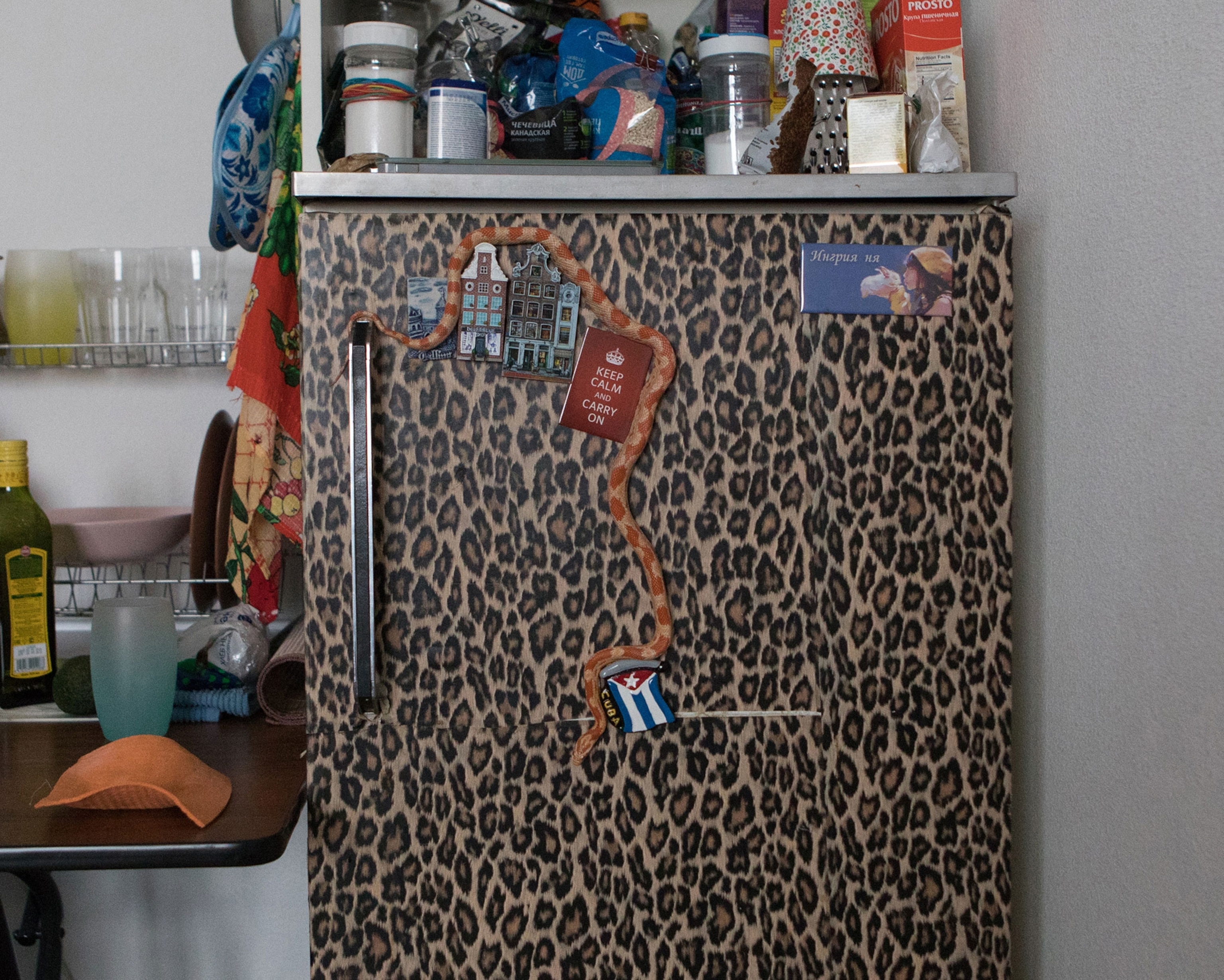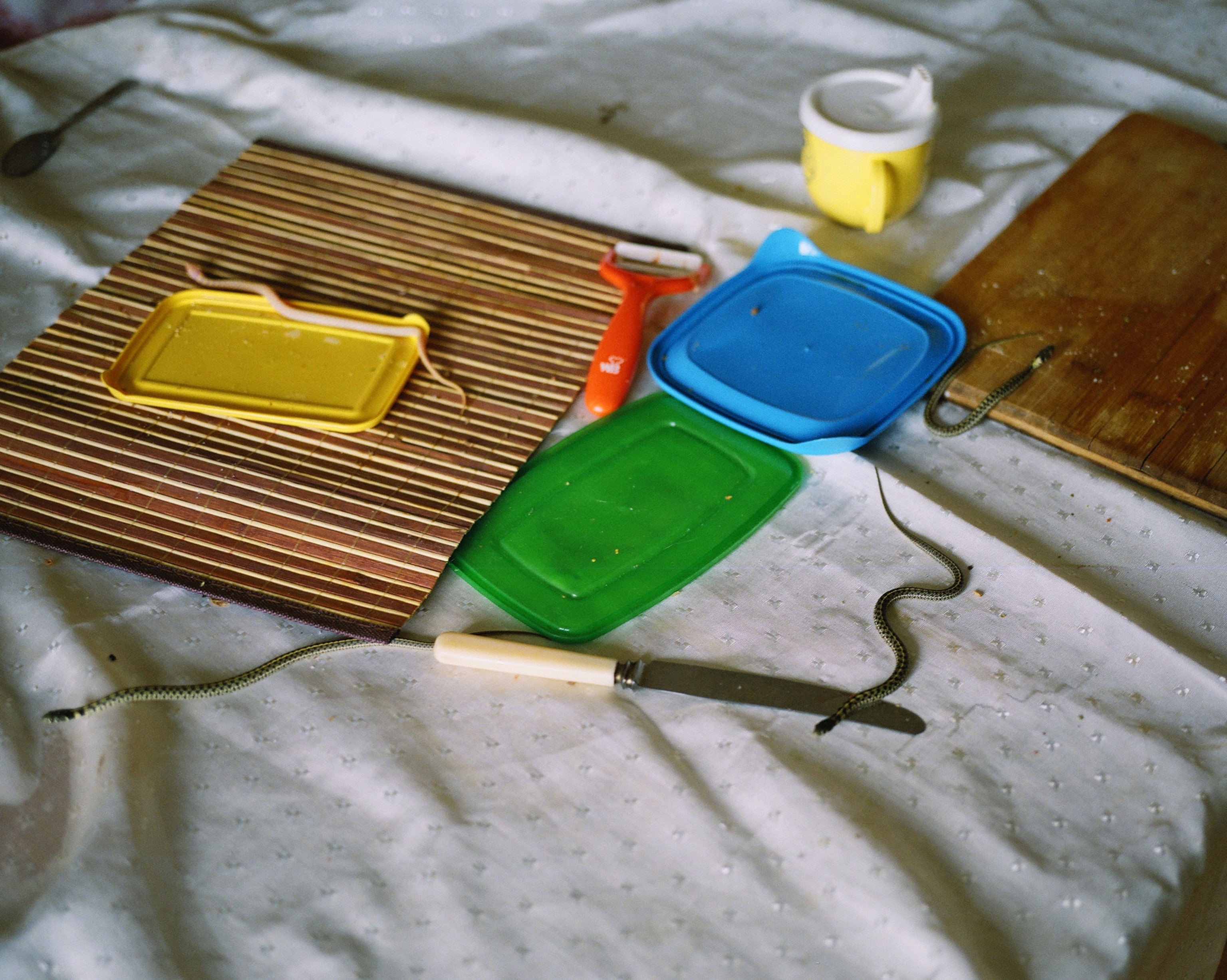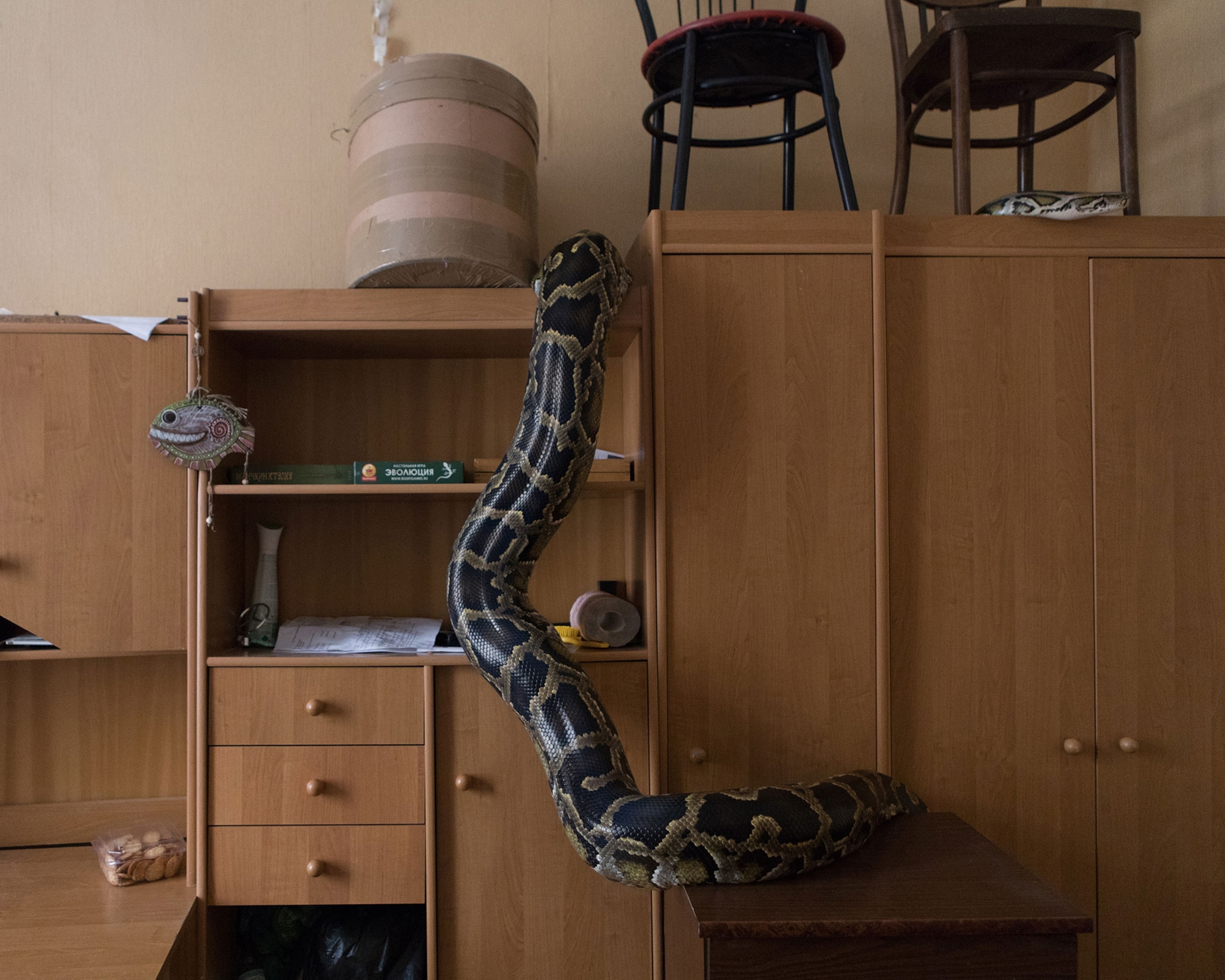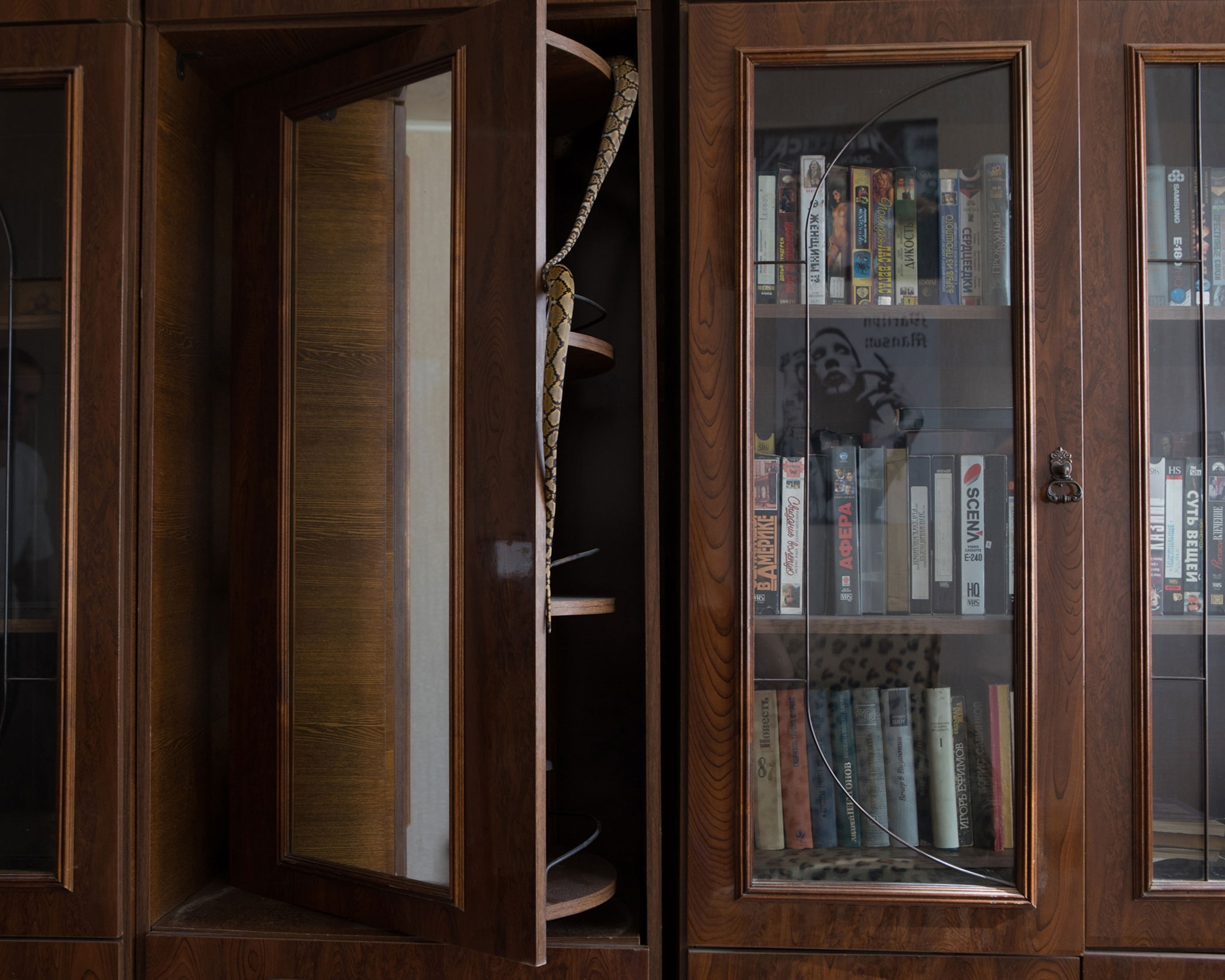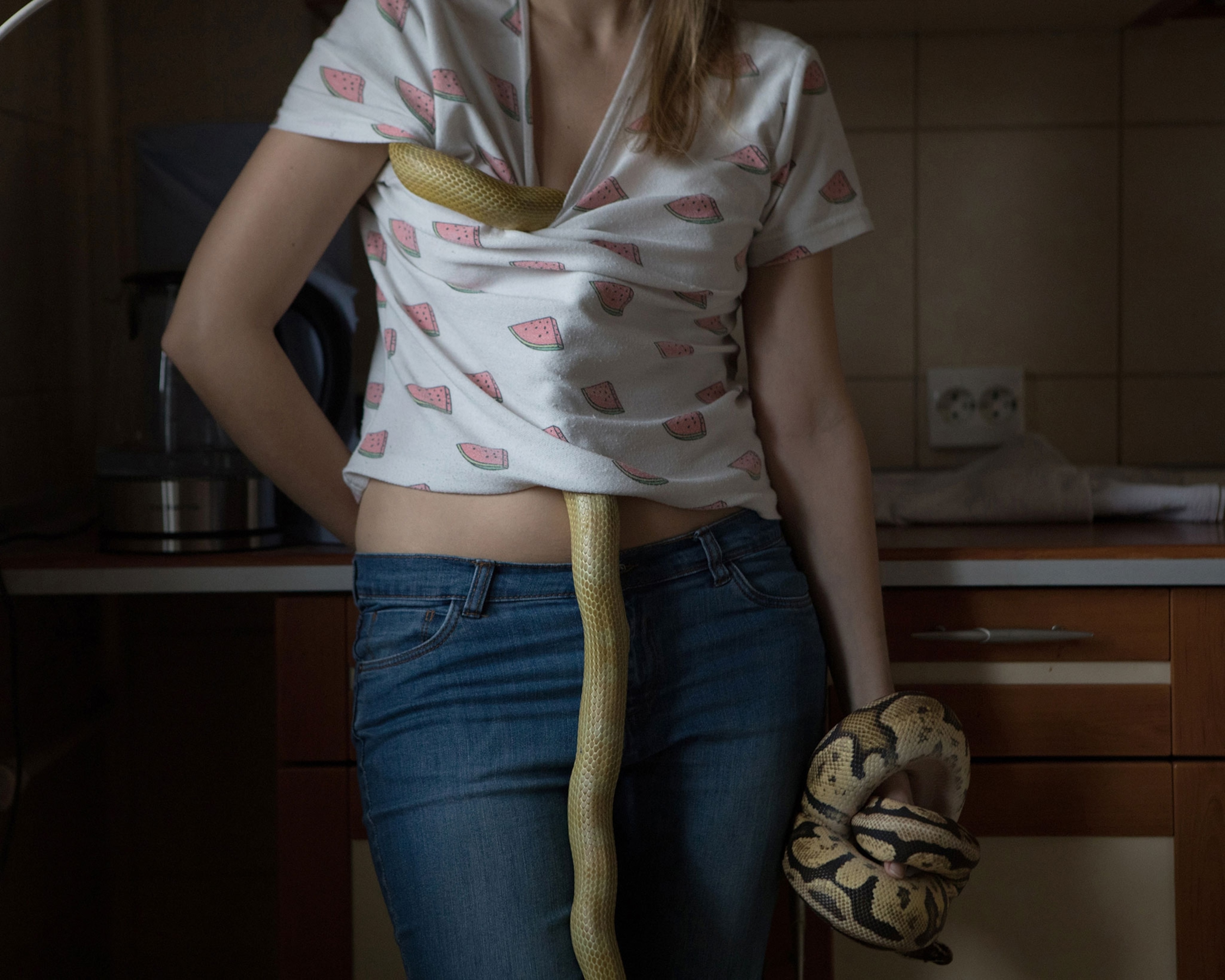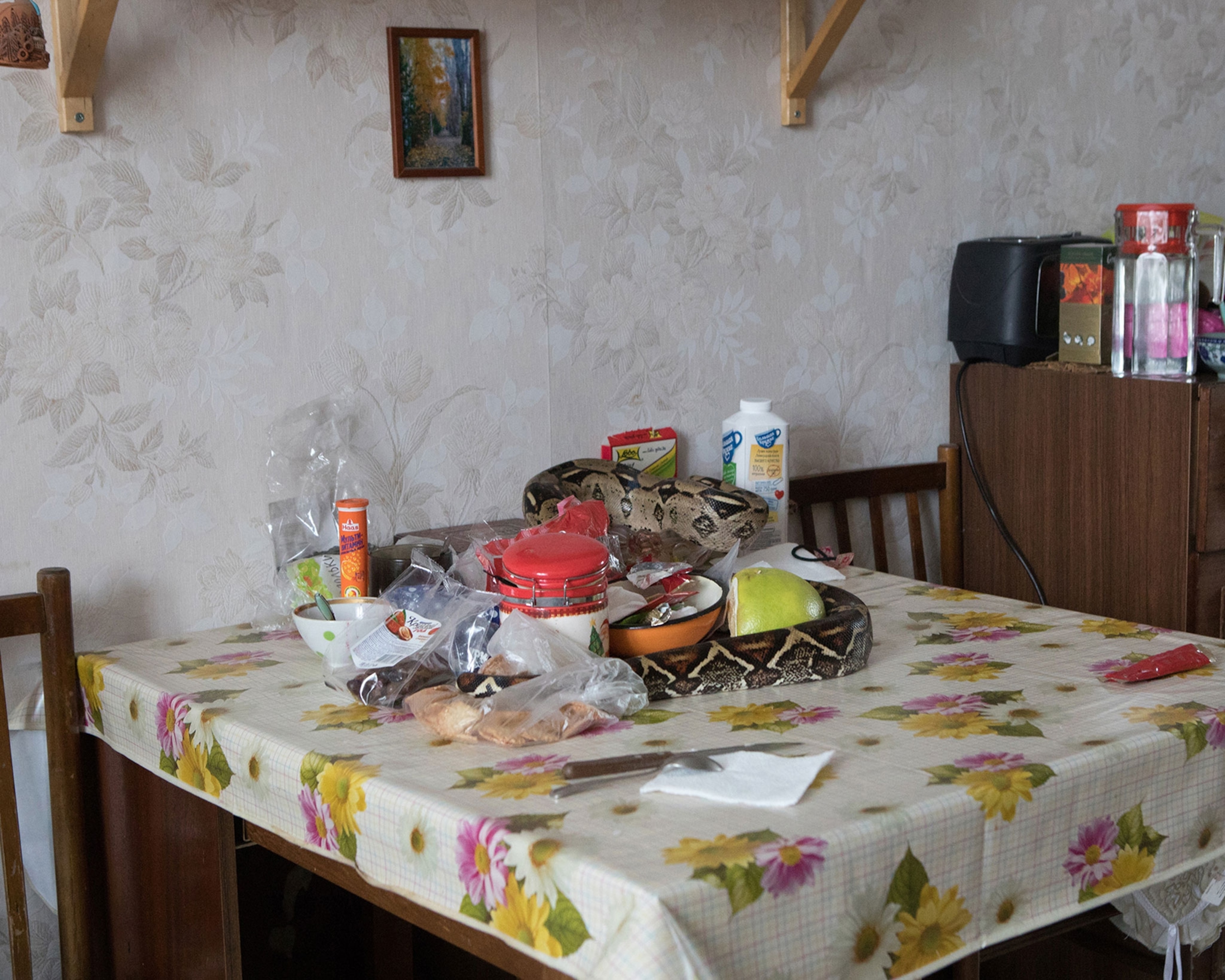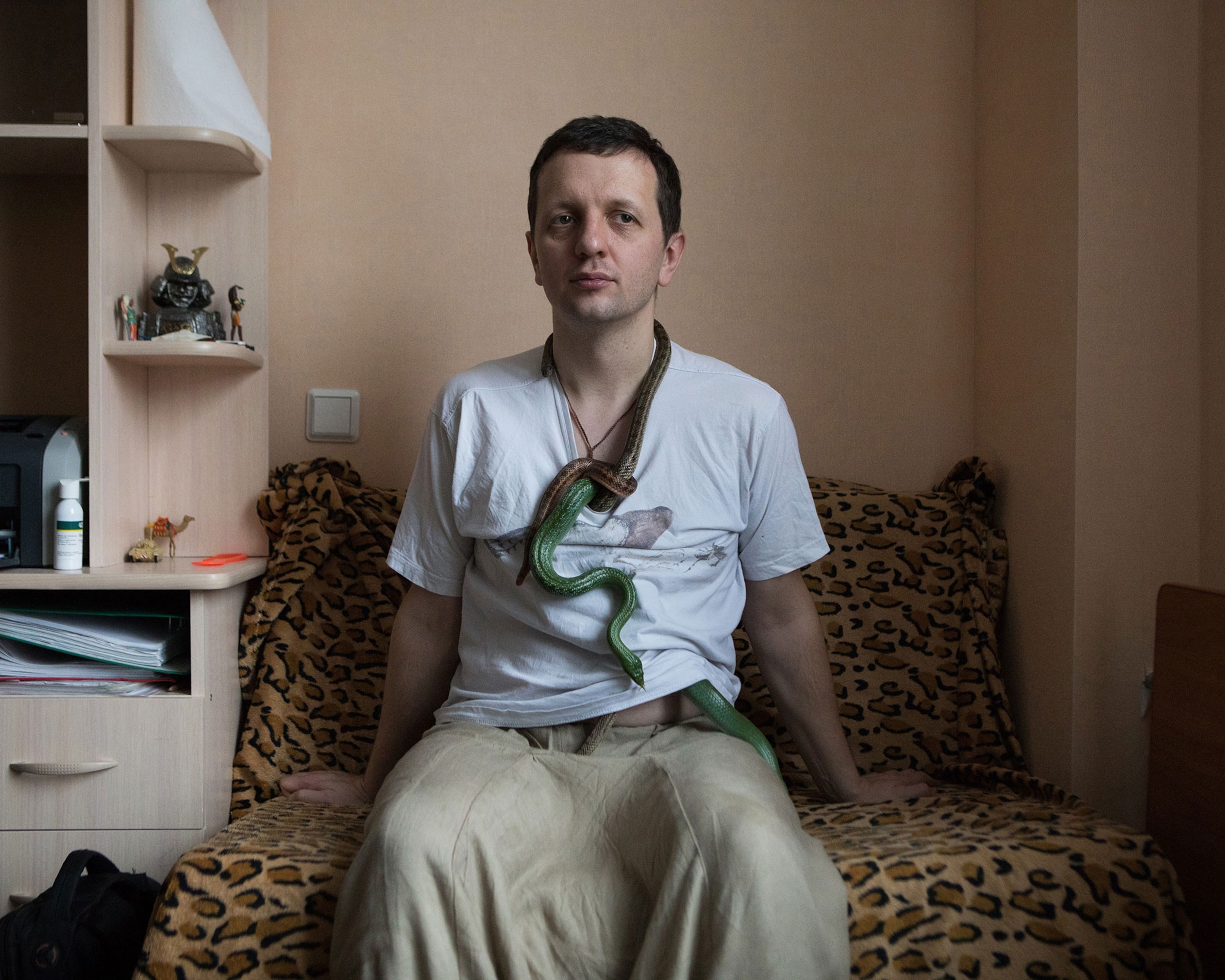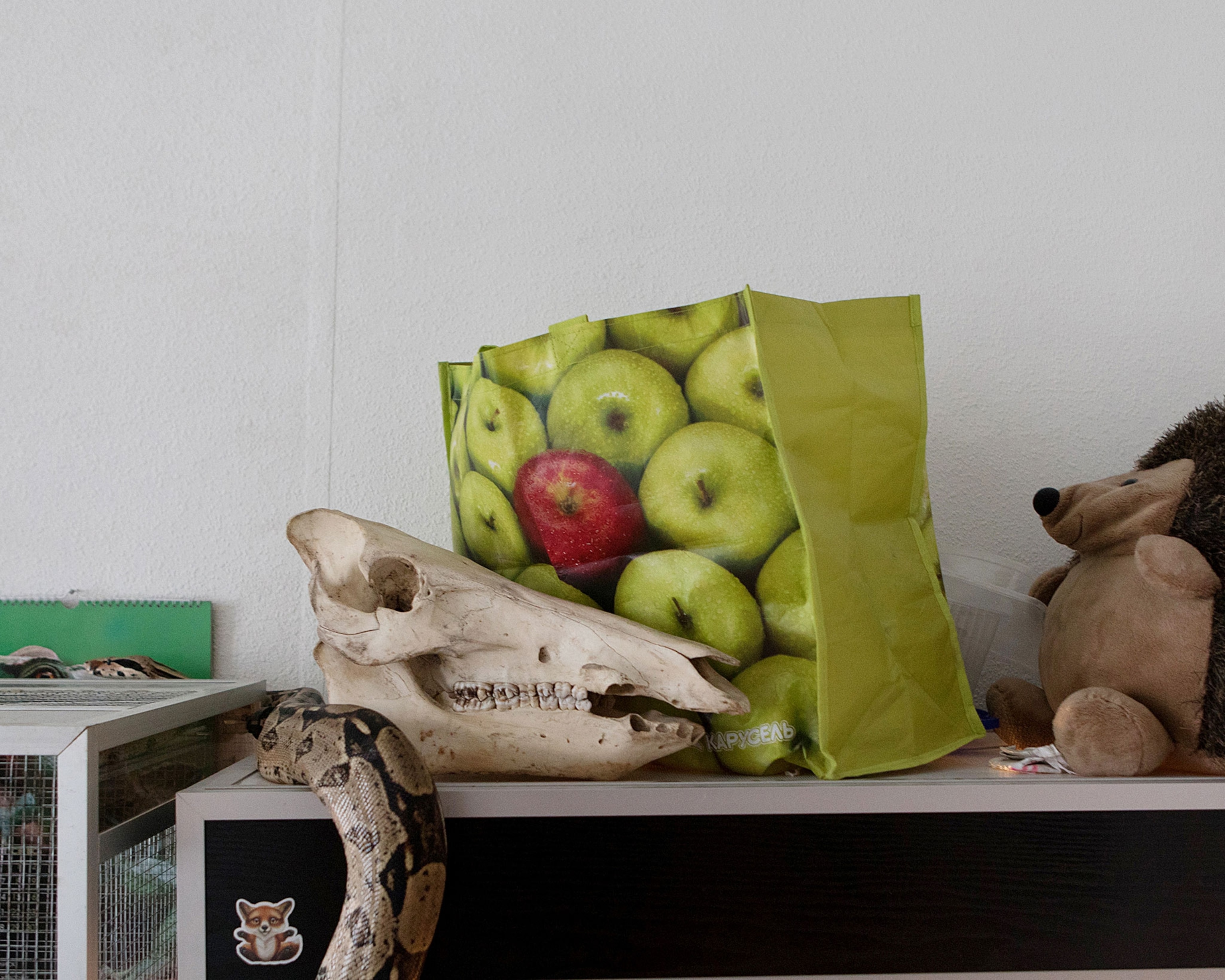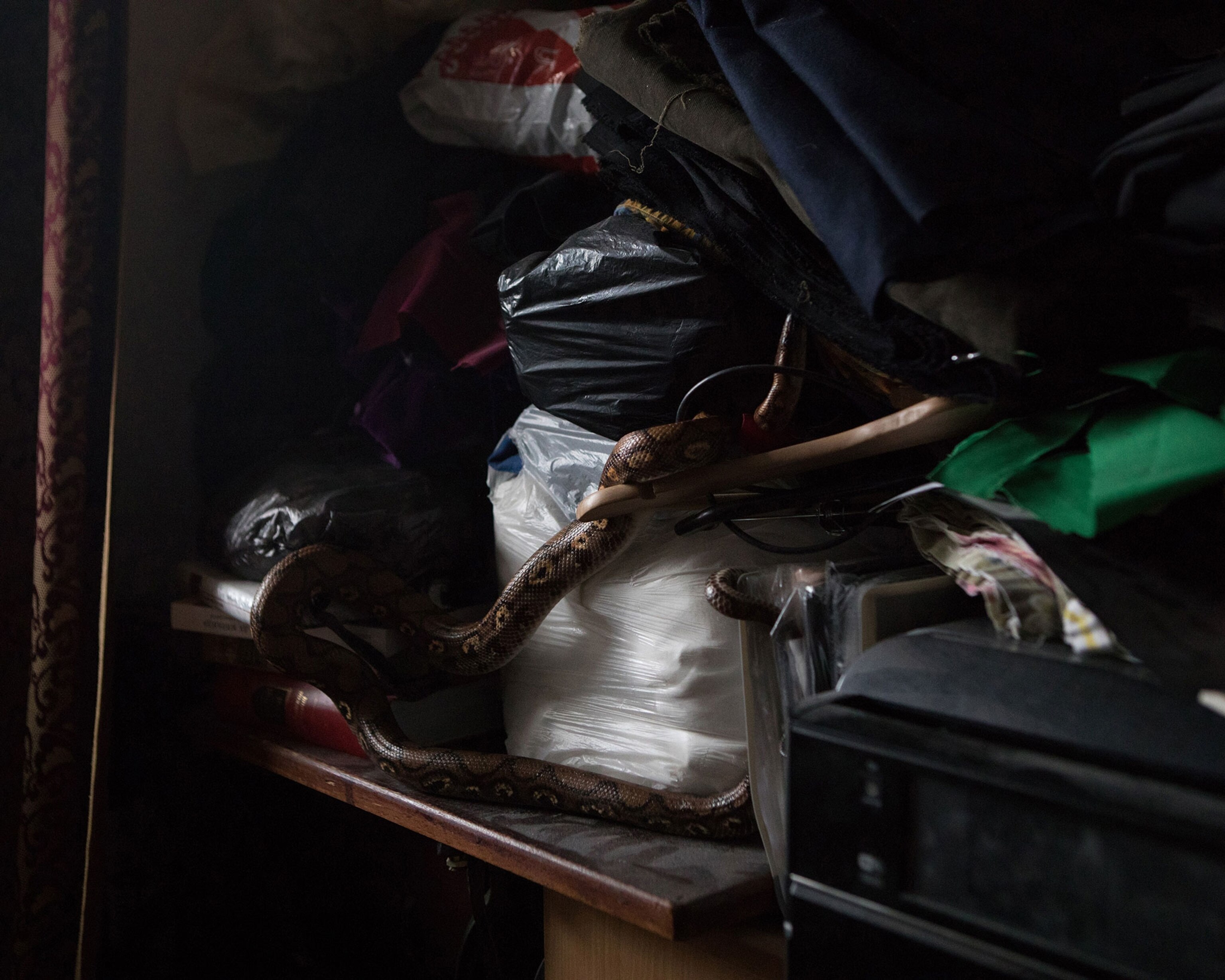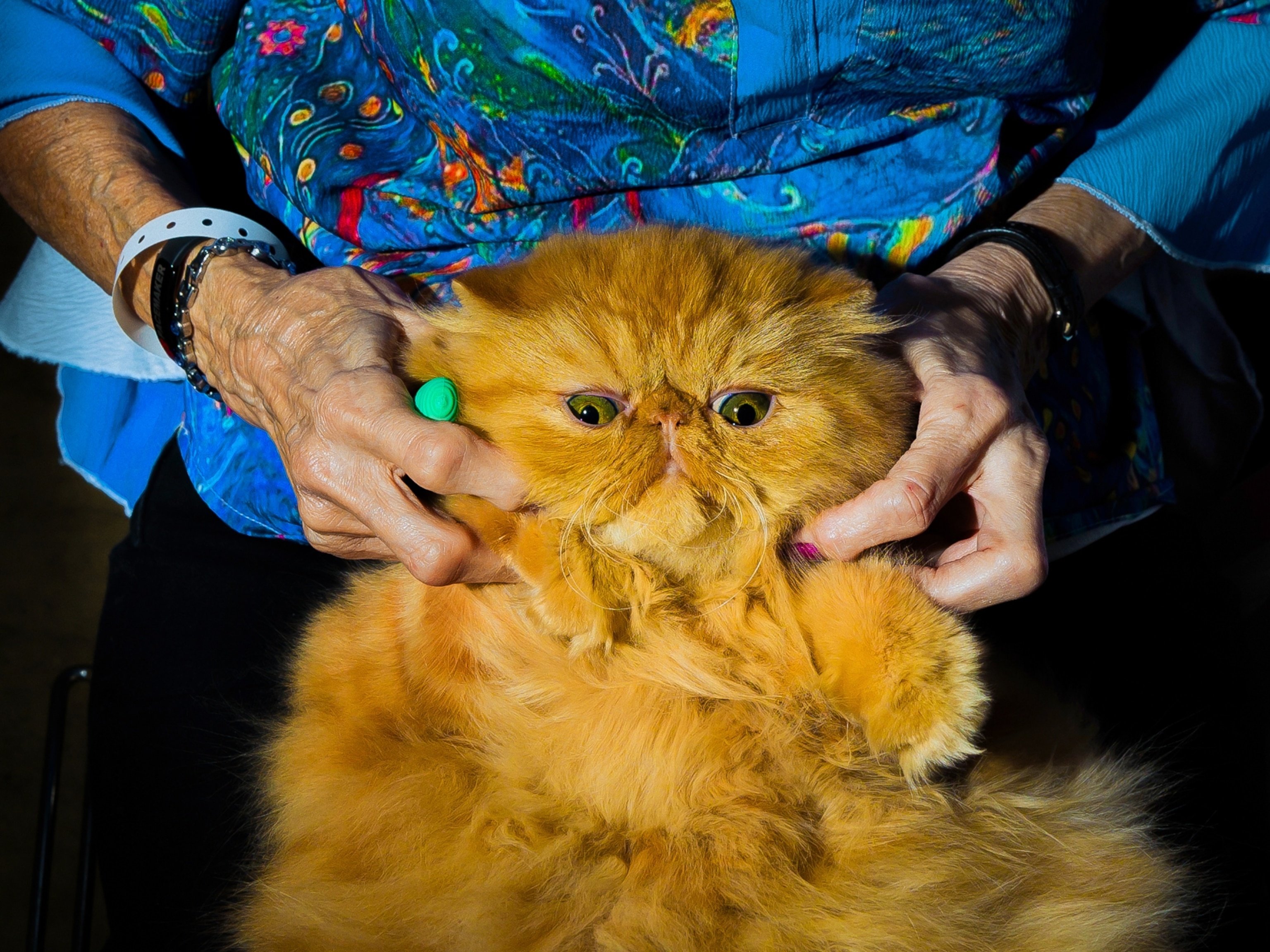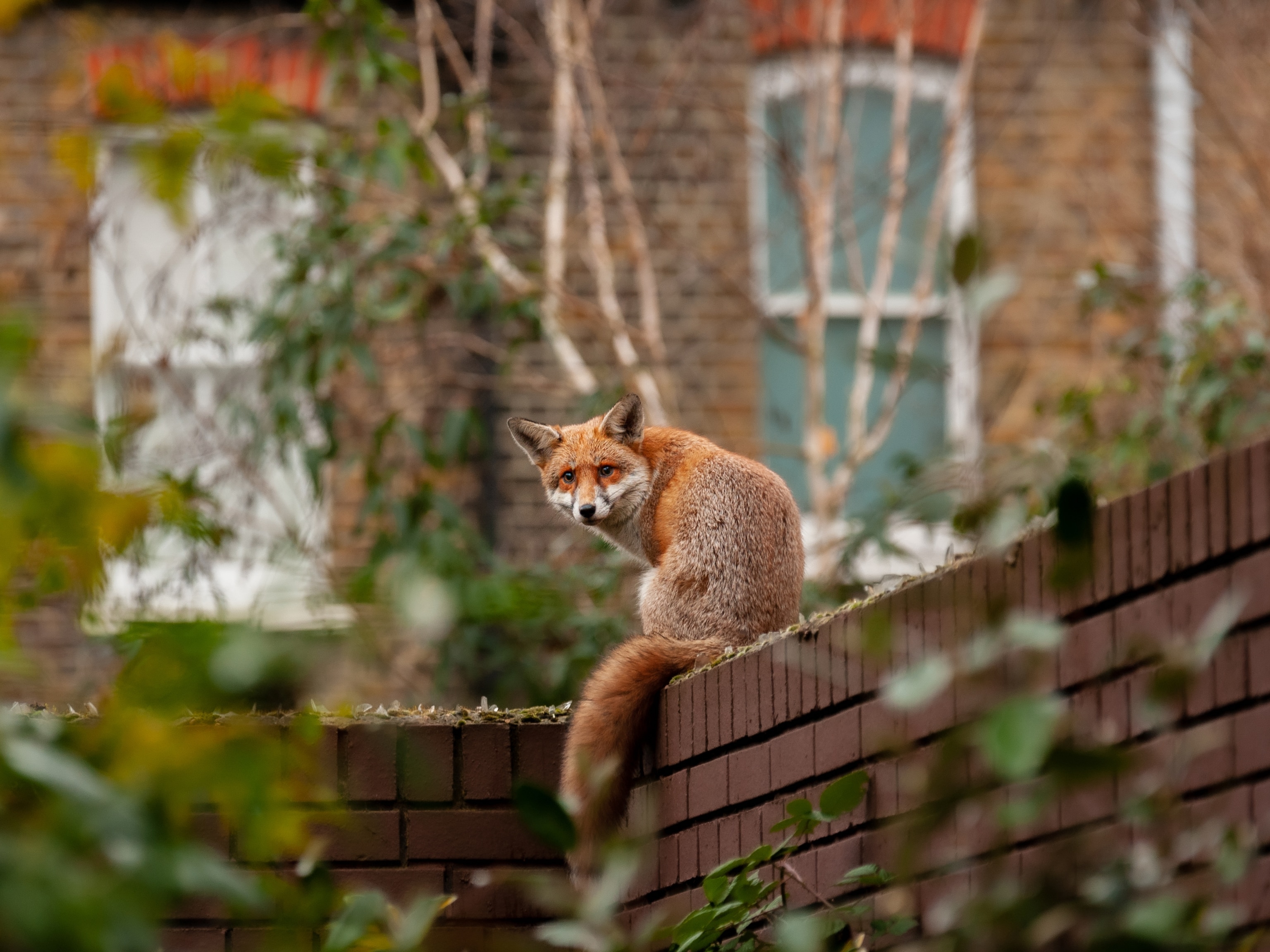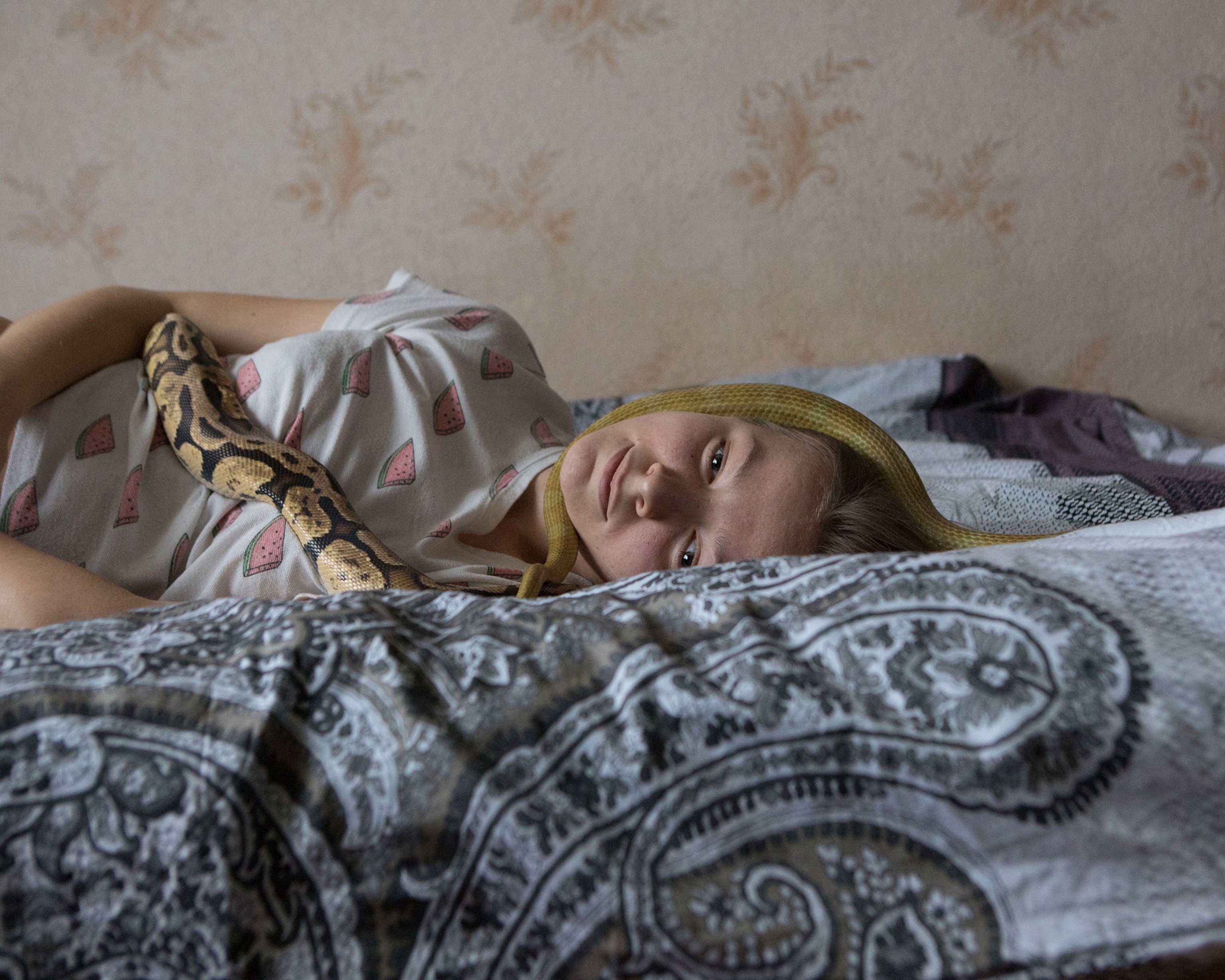
Intimate Photos of People and Their Beloved Pet Snakes
From boa constrictors to pythons, these slithery pets can be found among households in Russia.
Snakes have fascinated and repulsed humans for millennia.
In ancient Greece, they were signs of fertility and rebirth, while Christianity proclaimed them to be symbolic of salvation. Today, snakes are not only a fixation in popular culture but also desirable household pets. (See 22 spectacular pictures of snakes.)
For Russia-based photographer Jana Romanova, her own deep-rooted ophidiophobia led her to work on a year-long project documenting pet snakes in her home country, which, she says, became common after the fall of the Soviet Union.
“I wanted to investigate my own experience of phobia and explore why people might want to keep them as pets,” Romanova says. (If you’re scared of snakes, don’t watch this.)
But Romanova’s images are not simply pictures of snakes—“they are pictures of snakes in common environments,” constructed to catch the viewer off-guard, she says.
In some of her most compelling photographs, a thickly set boa constrictor slips its way around plywood cupboards, a reticulated python circles an iron, and a corn snake navigates the magnets on a leopard print fridge.
Tackling a Fear of Snakes
The stark combination of patterns and textures is not just visually interesting, it’s designed to challenge common misconceptions. In the process, Romanova also took on her own.
“In the beginning, I couldn’t even look at a picture of a snake,” she says. “Now I wouldn’t mind having one as a pet.” (Read about the boom of exotic pets.)
By exploring her own unexplained terror, she better analyzed the root of phobias.
“Most fears of snakes come from cultural references,” she says. “Like horror movies, parents telling children snakes are dangerous, or bogus news articles about snakes eating their owners.” (In very rare cases, pet pythons have killed children.)
Romanova was also surprised so many men kept pets as snakes.
“I thought it would be mostly be women, I think because subconsciously I’ve seen so many photos of snakes wrapped around women,” she says.
Soviet Stereotypes
Romanova’s pursuit also included challenging what she calls the “post-Soviet aesthetic.”
“There is a strong cliché about what people think about Russia and post-Soviet countries in general and how they all look similar,” she says. (Read “How Nat Geo Captured the Rise and Fall of the Soviet Union.”)
By documenting snakes against a typical post-Soviet domestic scene, Romanova questions fear of snakes but also fear of Russia.
“I wondered if I made either of them more or less exotic,” she says. “It’s an open question.”
See more of Jana Romanova's work on her website.

